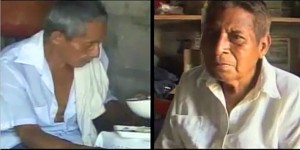Last two speakers of dying language Ayapaneco not on speaking terms
 Source: guardian.co.uk
Source: guardian.co.uk
While it may not be a well-known language (in fact, it could compete for being one of the least-known languages on the planet), Ayapaneco has been spoken in Mexico for centuries – before it was even known as Mexico. However, today there remains only two fluent speakers of the language – and they don’t want to talk to one another.
Exactly why Manuel Segovia (aged 75) and Isidro Velazquez (69) don’t enjoy each other’s company nowadays is not known, but the death of whatever friendship they may have had may also spell the death of yet another indigenous world language. Segovia still speaks Ayapaneco to his wife and son, who understand the language but cannot speak it fluently themselves. Velazquez no longer speaks Ayapaneco at all.
However, in an effort to save Ayapaneco from extinction, Indiana University linguistic anthropologist Daniel Suslak is in the process of producing an Ayapaneco dictionary; so even if there are no more native speakers, the language itself will at least survive, even if only for posterity.
As education in developing countries is increasingly standardized (much like standard Mandarin replacing the myriad Cantonese dialects in China), many indigenous languages and dialects all over the world are slowly dying out. Mexican children learn Spanish as their first language, and there is very little interest in learning the more obscure indigenous tongues. There are several languages all over the world that have only a handful of native speakers remaining, and numbers continue to dwindle as time rolls on. Mexico’s National Indigenous Language Institute may have shown interest in revitalizing the language, but through lack of funding and public interest, it looks like the sun may soon set on the Ayapaneco tongue.
The Guardian article also includes a list of other languages on the verge of extinction:
Ter Sami
Spoken by only two elderly people in the Kola peninsula in the north-west of Russia. Had about 450 speakers at the end of the 19th century until it was prohibited in schools in the 1930s.
Kayardild
Kayardild is spoken fluently by four people – all elderly Aboriginals – on Bentinck and Mornington Islands in Queensland, Australia.
Lengilu
Language from the north-eastern area of Kalimantan, Indonesia. Lengilu was at one stage spoken by 10 people. Today, there are only four.
Mabire
Three people reportedly speak Mabire in the Oulek village of Chad. The chief of the Mabire is the only Mabire speaker in his village so people doubt whether he is still fluent.
Tehuelche
Originally the language of nomadic hunters in Chile. The last four speakers live in Patagonia, Argentina.
